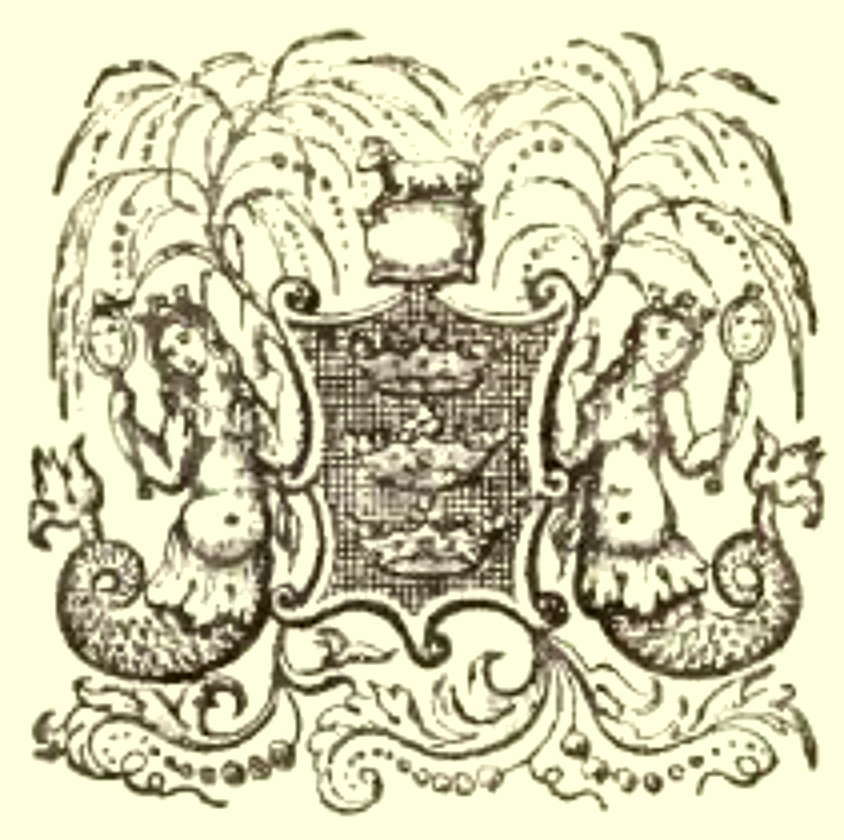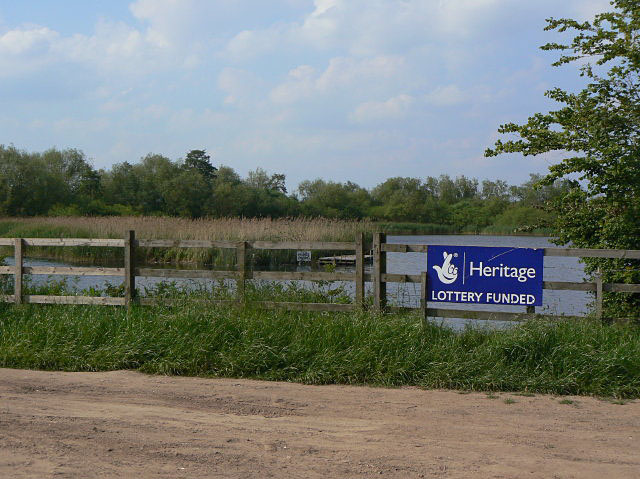|
Boston Guildhall
Boston Guildhall is a former municipal building in Boston, Lincolnshire. Built in 1390 and altered through the centuries, in the early 21st century it was restored and now serves as a local museum and also as a venue for civil ceremonies and private functions. It is a Grade I listed building. History St. Mary's Guild in Boston was founded as a merchant guild by a group of individuals in 1260. The guildhall, based on evidence from dendrochronology, was built in 1390, two years before incorporation of the guild and probably in anticipation of that event. The guild became wealthy as a result of extensive gifts received in the 14th and 15th centuries; an inventory shows that it held various items of gold, silver and gilt, as well as the sacred relics. In the 16th century, it established one of the country's richest trades in indulgences (in direct competition with Austin Friars, London, Austin Friars). As a result of the dissolution of the chantries and religious guilds, imposed by E ... [...More Info...] [...Related Items...] OR: [Wikipedia] [Google] [Baidu] |
Boston, Lincolnshire
Boston is a market town and inland port in the borough of the same name in the county of Lincolnshire, England. It lies to the south-east of Lincoln, east of Nottingham and north-east of Peterborough. The town had a population of 45,339 at the 2021 census, while the borough had an estimated population of 66,900 at the ONS mid-2015 estimates. The Haven in Boston flows about 5 miles away to the Lincolnshire coast at The Wash, a bay between Lincolnshire and Norfolk. Boston's most notable landmark is St Botolph's Church, colloquially referred to as 'The Stump', the largest parish church in England, which is visible from miles away across the flat lands of Lincolnshire. Residents of Boston are known as Bostonians. Emigrants from Boston named several other settlements around the world after the town—most notably Boston, Massachusetts, then a British colony and now part of the United States. Etymology The name ''Boston'' is said to be a contraction of " Saint Botolph's to ... [...More Info...] [...Related Items...] OR: [Wikipedia] [Google] [Baidu] |
Municipal Buildings, Boston
The Municipal Buildings are in West Street, Boston, a town in Lincolnshire, in England. The complex accommodates the offices and meeting place of Boston Borough Council. History The first municipal building in Boston was the guildhall which was completed in 1390. In the early 19th century, the fish market at the centre of the Exchange Buildings in the Market Place was converted for municipal use and subsequently became the offices of Boston Corporation, which was duly reformed in 1836 in accordance with the Municipal Corporations Act 1835. In the late 19th century, civic leaders decided to commission more substantial premises. The site they selected was on the south side of West Street. The new building was designed by James Rowell in the Edwardian Baroque style, built in red brick with terracotta dressings and was officially opened by the mayor, Alderman Joseph Cooke, in 1904. The design involved an asymmetrical main frontage of 10 bays facing onto West Street. The first bay ... [...More Info...] [...Related Items...] OR: [Wikipedia] [Google] [Baidu] |
Guildhall Museum (other)
{{disambig ...
Guildhall Museum can refer any of the Guild halls in England now used as museums, including *Boston Guildhall * Carlisle Guildhall *Leicester Guildhall *London Guildhall (museum from 1826 to 1974) * Looe Guildhall *Rochester Guildhall The Rochester Guildhall is an historic building located in the High Street in Rochester, Kent, England. It is a Grade I listed building. History The first guildhall in Rochester was located further south along the High Street on a site where ... [...More Info...] [...Related Items...] OR: [Wikipedia] [Google] [Baidu] |
Guild
A guild ( ) is an association of artisans and merchants who oversee the practice of their craft/trade in a particular territory. The earliest types of guild formed as organizations of tradespeople belonging to a professional association. They sometimes depended on grants of letters patent from a monarch or other ruler to enforce the flow of trade to their self-employed members, and to retain ownership of tools and the supply of materials, but most were regulated by the local government. Guild members found guilty of cheating the public would be fined or banned from the guild. A lasting legacy of traditional guilds are the guildhalls constructed and used as guild meeting-places. Typically the key "privilege" was that only guild members were allowed to sell their goods or practice their skill within the city. There might be controls on minimum or maximum prices, hours of trading, numbers of apprentices, and many other things. Critics argued that these rules reduced Free market, fre ... [...More Info...] [...Related Items...] OR: [Wikipedia] [Google] [Baidu] |
HMS Endeavour
HMS ''Endeavour'' was a British Royal Navy research vessel that Lieutenant James Cook commanded to Tahiti, New Zealand and Australia on his First voyage of James Cook, first voyage of discovery from 1768 to 1771. She was launched in 1764 as the Collier (ship type), collier ''Earl of Pembroke'', with the Navy purchasing her in 1768 for a scientific mission to the Pacific Ocean and to explore the seas for the surmised ''Terra Australis, Terra Australis Incognita'' or "unknown southern land". Commissioned as His Majesty's Bark ''Endeavour'', she departed Plymouth in August 1768, rounded Cape Horn and reached Tahiti in time to observe the 1769 transit of Venus across the Sun. She then set sail into the largely uncharted ocean to the south, stopping at the islands of Huahine, Bora Bora, and Raiatea west of Tahiti to allow Cook to claim them for Great Britain. In September 1769, she anchored off New Zealand, becoming the first European vessel to reach the islands since Abel Tasman's ... [...More Info...] [...Related Items...] OR: [Wikipedia] [Google] [Baidu] |
James Cook
Captain (Royal Navy), Captain James Cook (7 November 1728 – 14 February 1779) was a British Royal Navy officer, explorer, and cartographer famous for his three voyages of exploration to the Pacific and Southern Oceans, conducted between 1768 and 1779. He completed the first recorded circumnavigation of the main islands of New Zealand and was the first known European to visit the eastern coastline of Australia and the Hawaiian Islands. Cook joined the British merchant navy as a teenager before enlisting in the Royal Navy in 1755. He served during the Seven Years' War, and subsequently surveyed and mapped much of the entrance to the St. Lawrence River during the Battle of the Plains of Abraham, siege of Quebec. In the 1760s, he mapped the coastline of Newfoundland (island), Newfoundland and made important astronomical observations which brought him to the attention of the Admiralty (United Kingdom), Admiralty and the Royal Society. This acclaim came at a crucial moment in Brit ... [...More Info...] [...Related Items...] OR: [Wikipedia] [Google] [Baidu] |
Joseph Banks
Sir Joseph Banks, 1st Baronet, (19 June 1820) was an English Natural history, naturalist, botanist, and patron of the natural sciences. Banks made his name on the European and American voyages of scientific exploration, 1766 natural-history expedition to Newfoundland and Labrador. He took part in Captain James Cook's First voyage of James Cook, first great voyage (1768–1771), visiting Brazil, Tahiti, and after 6 months in New Zealand, Australia, returning to immediate fame. He held the position of president of the Royal Society for over 41 years. He advised King George III on the Royal Botanic Gardens, Kew, sending botanists around the world to Botanical expedition, collect plants, he made Kew the world's leading botanical garden. He is credited for bringing 30,000 plant specimens home with him; amongst them, he was the first European to document 1,400. Banks advocated Colony of New South Wales, British settlement in New South Wales and the colonisation of Australia, as wel ... [...More Info...] [...Related Items...] OR: [Wikipedia] [Google] [Baidu] |
Thomas Phillips
Thomas Phillips (18 October 1770 – 20 April 1845) was a leading English portrait and subject painter. He painted many of the notable men of the day including scientists, artists, writers, poets and explorers. Life and work Phillips was born at Dudley, then in Worcestershire. Having learnt glass-painting in Birmingham under Francis Eginton, he visited London in 1790 with an introduction to Benjamin West, who found him employment on the painted-glass windows of St George's Chapel at Windsor. In 1791 he became a student at the Royal Academy, where, in 1792 he exhibited a view of Windsor Castle, followed in the next two years by the ''Death of Talbot, Earl of Shrewsbury, at the Battle of Castillon'', ''Ruth and Naomi'', ''Elijah restoring the Widow's Son'', ''Cupid disarmed by Euphrosyne'', and other pictures. After 1796, he concentrated on portrait-painting. However, the field was very crowded with the likes of John Hoppner, William Owen, Thomas Lawrence and Martin Arche ... [...More Info...] [...Related Items...] OR: [Wikipedia] [Google] [Baidu] |
Flemish Bond
Flemish bond is a pattern of brickwork that is a common feature in Georgian architecture. The pattern features bricks laid lengthwise (''stretchers'') alternating with bricks laid with their shorter ends exposed (''headers'') within the same courses. This decorative pattern can be accented by glazing or burning the exposed ends of the headers so that they possess a dark, glassy surface that contrasts with the stretchers. Despite the bond's name, the pattern did not originate in Flanders and can be found in European architecture dating to the late Middle Ages. The pattern became popular among prestigious architectural projects in 17th-century England before spreading to British colonies in North America where it became closely associated with colonial Georgian architecture, especially in Virginia and Pennsylvania. With the early 20th-century restoration project at Colonial Williamsburg, the pattern experienced renewed popularity in the United States. Name Despite being called " ... [...More Info...] [...Related Items...] OR: [Wikipedia] [Google] [Baidu] |
English Bond
Brickwork is masonry produced by a bricklayer, using bricks and mortar. Typically, rows of bricks called '' courses'' are laid on top of one another to build up a structure such as a brick wall. Bricks may be differentiated from blocks by size. For example, in the UK a brick is defined as a unit having dimensions less than and a block is defined as a unit having one or more dimensions greater than the largest possible brick. Brick is a popular medium for constructing buildings, and examples of brickwork are found through history as far back as the Bronze Age. The fired-brick faces of the ziggurat of ancient Dur-Kurigalzu in Iraq date from around 1400 BC, and the brick buildings of ancient Mohenjo-daro in modern day Pakistan were built around 2600 BC. Much older examples of brickwork made with dried (but not fired) bricks may be found in such ancient locations as Jericho in Palestine, Çatal Höyük in Anatolia, and Mehrgarh in Pakistan. These structures have survived from ... [...More Info...] [...Related Items...] OR: [Wikipedia] [Google] [Baidu] |
Heritage Lottery Fund
The National Lottery Heritage Fund, formerly the Heritage Lottery Fund (HLF), distributes a share of National Lottery funding, supporting a wide range of heritage projects across the United Kingdom. History The fund's predecessor bodies were the National Land Fund, established in 1946, and the National Heritage Memorial Fund, established in 1980. The current body was established as the "Heritage Lottery Fund" in 1994. It was re-branded as the National Lottery Heritage Fund in January 2019. Activities The fund's income comes from the National Lottery, which is managed by Allwyn Entertainment. Its objectives are "to conserve the UK's diverse heritage, to encourage people to be involved in heritage and to widen access and learning". As of 2019, it had awarded £7.9 billion to 43,000 projects. In 2006, the National Lottery Heritage Fund launched the Parks for People program with the aim to revitalize historic parks and cemeteries. From 2006 to 2021, the Fund had granted £2 ... [...More Info...] [...Related Items...] OR: [Wikipedia] [Google] [Baidu] |






